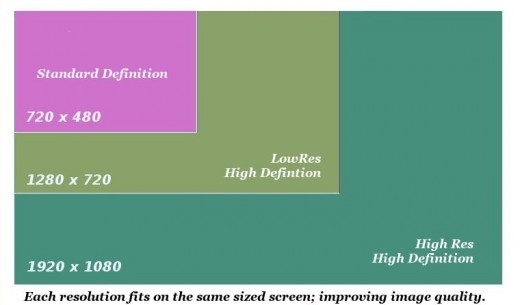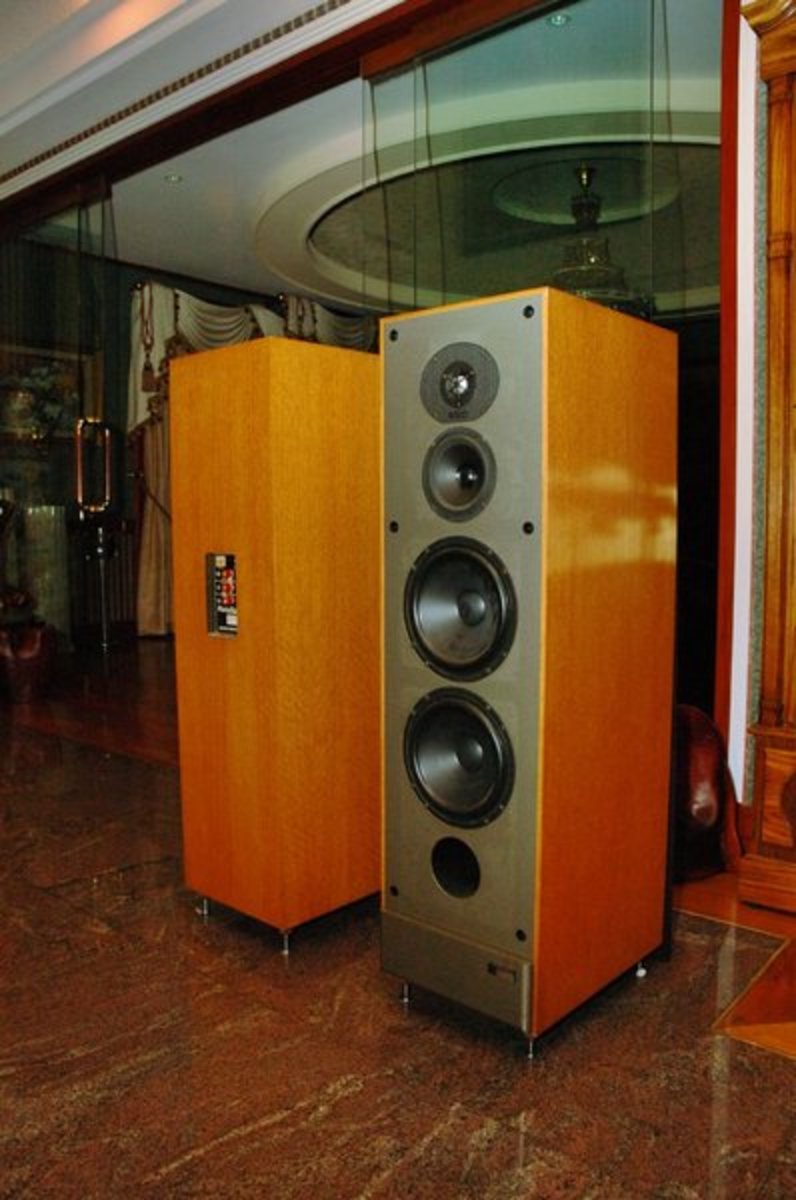What is High Definition Television?




High Definition Television, in the U.S.
In order to understand what High Definition Television is we should compare it to standard television signals. To do that we have to understand
- how the image we see is presented to our eyes and brain.
- how those images are broadcast and displayed on the screen
- why it matters at all.
In this entire article I use the terms SDTV, HDTV, DTV, 480, 720, and 1080 along with the letters (i & p). These are common terms in the decription and sales or services of television sets, cable boxes, and DVD players.
Standard Definition TV (SDTV): Television signals are currently broadcast as electromagnetic signals. This is true whether you have an antenna, a cable connection, or satellite dish. This means of sending signals limits how much information can be sent in a given amount of time.
Because of this inherent limit former broadcast television signals were made up of 480 lines of information from the top of the screen to the bottom (vertical resolution) or, to put this another way, the number horizontal lines of information are shown on your television screen to make an image. All 480 lines of signal are seen by the human eye and brain as a single picture. These 480 horizontal lines are sent twenty four (24) times per second. Twenty-four, by the way, is the same number of still images presented to your eye by a movie projector at the theater.Note: In Europe the number is 25 frames per second.
Interlaced Scan: 480i television broadcast signals not only make up 480 lines of image information on your screen they are sent in two interlaced "bursts." In other words the picture you see on your screen is painted on the screen twice; odd numbered lines first and then even numbered lines second. Interlacing provides a sharper image if that image is still, but is considerably blurrier if the image is moving.
Progressive Scan: DVD player (and now some broadcast) signals sent to your TV via composite cabling or S-Video jacks are sent as progressive lines of visual information. This means that the entire image is painted onto the screen in one pass with no interlacing. You may have noticed that a progressive scan DVD image is smoother and sharper than a standard DVD or TV signal image.
DTV vs HDTV: Digital TV, a federally mandated standard that will be applied to all broadcast signals starting June 12, 2009 (as of February 17, 2009 only 1/3 of the public had converted) is not HDTV. It is referred to as DTV and allows more information to be sent to sets with digital tuners than older SDTV sets with analog tuners.
So, HDTV and DTV are two different things; however, you cannot receive an HDTV signal without DTV tuner or box.
Higher Resolution with HDTV: Higher resolution means more vertical resolution lines in the same picture. More vertical and horizontal lines means a sharper image. A sharper image means a bigger screen, if you wish, and a more theatrical experience at home.
HDTV Resolutions: Resolutions for High Definition TV are 720 lines or 1,080 lines of vertical (from top to bottom) resolution. Both of these resolutions can be sent as interlaced or progressive scan.
The graphic at the top of this article demonstrates relative screen sizes for the roughly same quality image. Or how much more information can be packed into an image based on it's resolution. If the actual screen size does not change, but the resolution goes up the image will be sharper. Imagine that you have two photographs that are 4" X 3" inches. If one photograph has a total of 345,000 dots making up the picture and the other 2,100,000 dots the second photograph will be sharper.
As you might imagine progressive scan imaging provides better picture quality than interlaced imaging for most viewing situations. This is especially true if the images viewed are moving as is the case with most broadcasts. Most broadcast HDTV signals will be 1080i.
Summary:
- The higher the number of lines of vertical resolution the better the image. This is because the TV screen, if the same size in each case, will have more dots per inch.
- DTV is not HDTV.
- High Definition TV Receivers can receive high definition signals, interpret them for display and are typically built into the high definition tv.
- DTV is required for HDTV signals.
- HD DVD and Blu Ray are competing products and may not be compatible with each other. (Note: Sony BluRay won the format wars, but the technology developed for HD DVD is now being used by many DVD player manufacturers to "upconvert" older DVDs to high resolution)
p stands for progressive scan and typically provides a crisper image than interlaced.
i stands for interlaced and typically provides a less crisp image.
For information on the future of this technology see Aspect Ratio and the Future of Widescreen Television by carpesomediem
If you want to see how much one of these will cost in electricity, please visit my hub, on "How to Use Less Electricity." About the middle of the article is a section on HDTV types, sizes, and power usage.
Glossary
- SDTV: Standard Television. Screen resolution of 720 by 480 pixels.
- HDTV: High Definition Television. Screen resolutions of 1280 by 720 (lo-res) or 1920 by 1080 (hi-res).
- DTV: Digital Television. Not the same as HDTV. Required for HDTV broadcasts. Will become U.S. standard on February 17, 2009.
- DVD: Infrared or red light laser. DVD players creates a 480i or 480p signal to the TV set.
- Progressive scan: A resolution of 480p; usually a better picture than 480i.
- Blu Ray & HD DVD: Uses a blue light laser. Provides a resolution of 1080 (i or p). These players are backward compatible so old DVD discs will still work on them. Blu Ray is promoted by Disney (among other companies) and HD DVD by Toshiba (among other companys). They are competing products and may not be compatible with each other.
- Up-convert DVD: These DVD players can take the standard 480 (i or p) signal from red light laser DVDs and digitally increase the resolution to 1080i.
- Aspect Ratio: The horizontal and vertical dimensions of an image determine the aspect ratio. 4:3 is the SDTV ratio and 16:9 is the defacto standard HDTV ratio. 16:9 is closer to movie theater image dimensions than 4:3. Before movie studios went with panoramic or wide-screen images after the 1950s 4:3 was the typical aspect ratio. Panoramic and WideScreen fit nicely into the 16:9 aspect ratio.
It's no coincidence that TV image ratios mimic movie screen dimensions.
Pixel: A contraction of the two words Picture & Element. This is the smallest element in a television picture. The number of pixels is also an indicator of resolution. To determine the number of pixels in your TV image multiply the vertical resolution by the horizontal resolution.
- 720 x 480 = 345,600 pixels
- 1,280 x 720 = 921,600 pixels
- 1,920 x 1,080 = 2,073,600 pixels
Now imagine that all three of the above specifications fit on the same sized screen. The larger number of pixels for the same sized TV screen means a higher resolution.
Pixel, as a term, can also be applied to digital still or movie photography.
Try this exercise with the lo-res (middle ratio) above. Divide the vertical resolution 1280 by 16. The result is 80. Multiply the 80 by 9. The result is 720. The lo-res aspect ratio is then 16:9.










